December 12, 2023
Football and engineering might not seem like a likely couple, but students in Mizzou’s College of Engineering are using their technical know-how to design safer and more comfortable football equipment for the ninth-ranked Tigers.
Dec.12, 2023
Contact: Eric Stann, 573-882-3346, StannE@missouri.edu
Photos and video by CJ Harris
The University of Missouri football team has been on a hot streak this season, ranking nationally and dominating games against SEC rivals. Now, Mizzou engineering students are designing new equipment to make sure players stay comfortable on the field.
Two groups of mechanical engineering students are working with the Tigers to incorporate heat transfer technologies into football equipment — keeping feet cool in summer and heads warm in winter. It’s part of senior capstones, projects that are designed to give students real-world experience while solving real-world problems.

“I used to be a collegiate athlete, and I love the competitive environment of sports,” said senior mechanical engineering student and cleats project member Andrew Reinhard. “I want to help in any way I can for our student-athletes to be able to compete and train to be the best they can.”
Staying hot while keeping cool
When Matt Maschmann, an associate professor of mechanical engineering, saw that Brock Olivo, former Tigers rushing and touchdown leader turned special teams analyst, had returned to Columbia, he reached out to his high school friend to welcome him home. Olivo offered to give Maschmann a tour of the new south end zone facility at Faurot Field.
It was a hot day, and during the tour Olivo told Maschmann, an expert in materials and heat transfer, that athletes often complained of having hot feet from being on the turf for extended periods. Maschmann, seeing an opportunity, thought the problem would be an intriguing senior capstone project. Olivo agreed.
“When Dr. Maschmann proposed the idea to me, I immediately agreed to collaborate,” Olivo said. “I believe in Dr. Maschmann’s work, and I hope this project discovers a solution to the burning sensation players can feel in their feet sometimes, which is caused by AstroTurf being exposed to elevated temperatures in the summer months.”
A few months later, students in the mechanical engineering capstone course took up the task.
To solve the problem of overheating feet, the cleats team is designing a new insulating sole that entails high thermal resistance and low thermal conductivity — meaning it will be more difficult to heat up and stay warm. They are also working on an active cooling loop that extracts heat from the balls of the feet and disperses it at the tongue of the shoe, where temperatures are cooler. Combined, these properties will keep players’ feet cooler and players more comfortable.

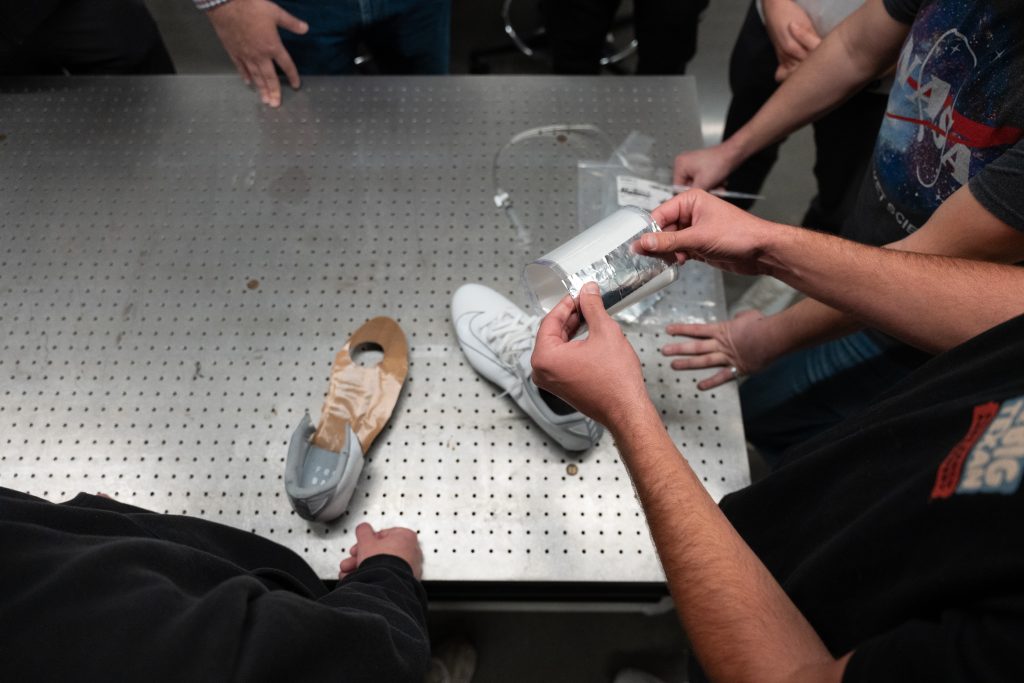
Improving player safety
While the cleats group is working to keep the equipment cool when the AstroTurf is hot, the helmets group is looking for ways to keep the padding material warm and more flexible in colder months.
“The comfortability of the helmet directly impacts how safely technique and play calls are executed,” said Michaela Ross, a mechanical engineering student who advocated for the creation of a second project with Mizzou Athletics. “Different brands of helmets have different internal structures, external shapes, and differences of padding configuration. And players in different positions have different preferences. We decided to focus our project on maintaining safety requirements while adding a system that offers more versatility of comfort.”
To retain heat, the helmets team is using a phase-change material to distribute thermal energy to the helmet padding when the helmet isn’t being worn. Essentially, it’s taking heat from where the equipment touches the player’s head while they’re wearing it and transferring into the padding when the helmet is not worn and is exposed to cold temperatures.
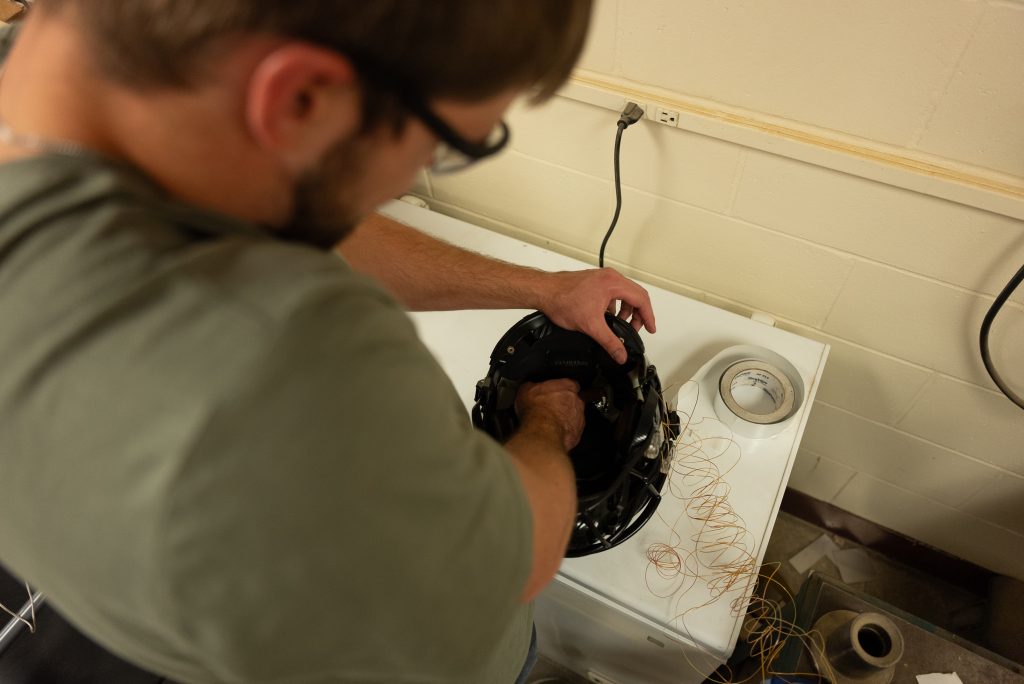
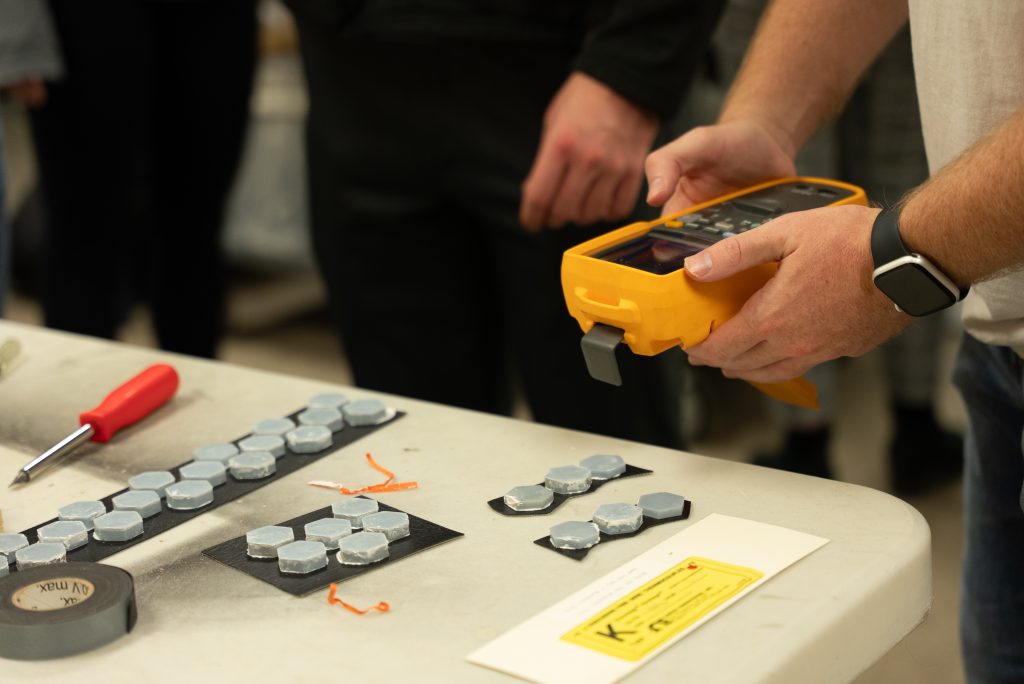
Bringing the love of the game into the lab
Regardless of whether the projects end up being implemented, the students involved say the experience was fun, challenging and a memorable way to wrap up their time at Mizzou.
“Communicating with a diverse team, who is looking at the problem from different perspectives, allowed us to incorporate a variety of ideas into our project,” Reinhard said. “Much of an engineering degree is individual, but this has given us the opportunity to work as a group in order to tackle a complex problem. Each person brings their own strengths to the equation, and it has been great to learn from and work with my teammates.”
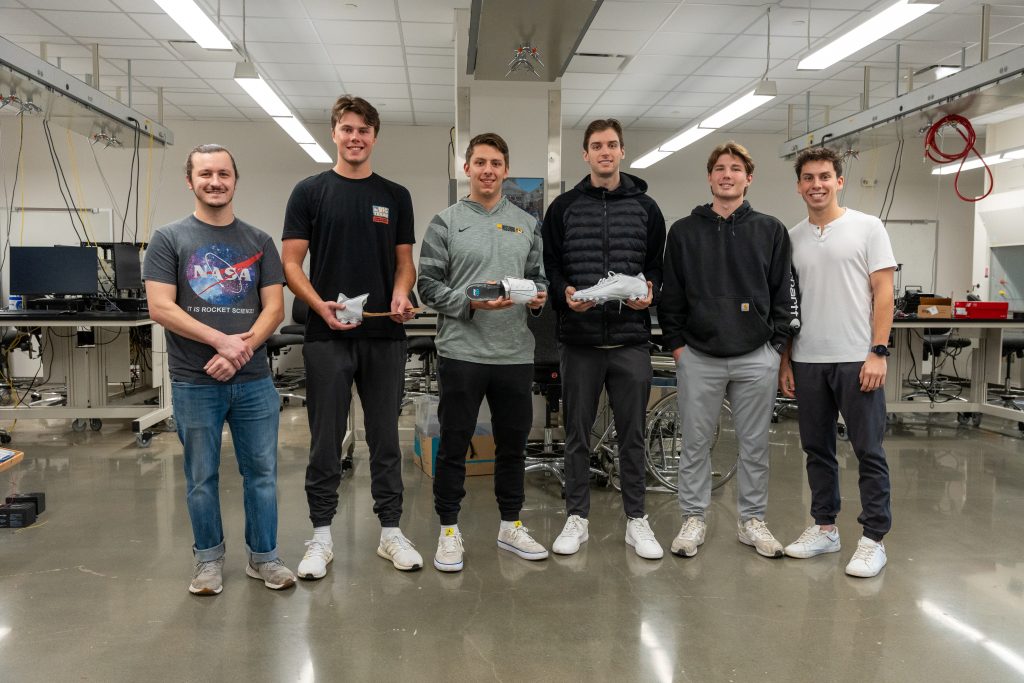
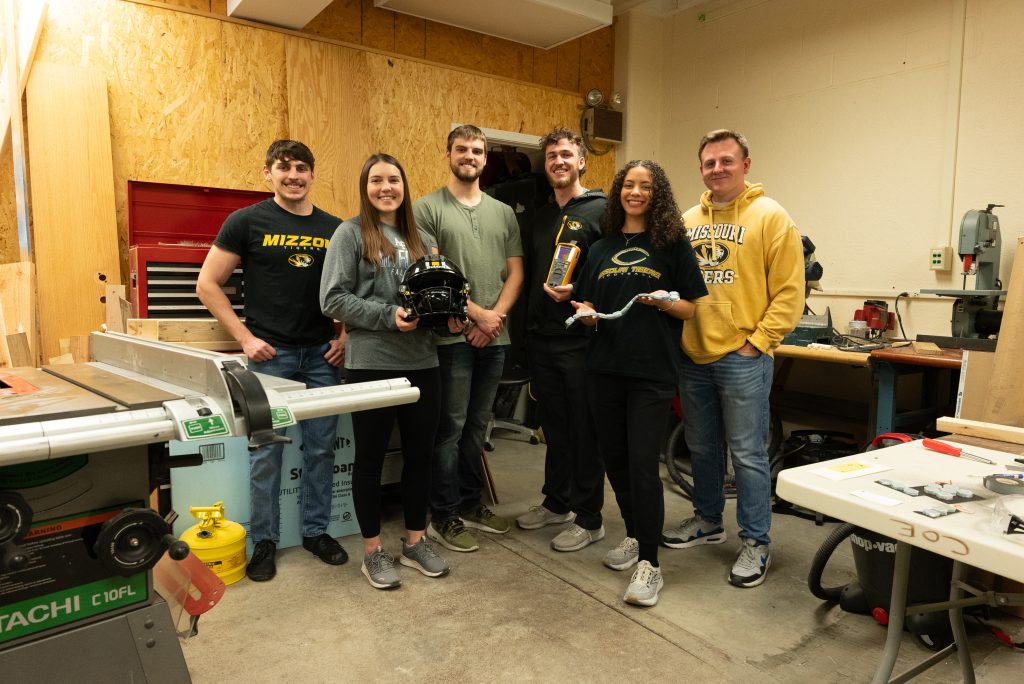
From one generation of Mizzou Engineers to the next
After commencement, the students working on the projects will disperse as they pursue post-graduation plans. For Tauer, that means staying at Mizzou to continue his undergraduate research into nanomaterials under Maschmann’s guidance as he pursues a master’s degree in mechanical and aerospace engineering.
While Maschmann didn’t work on athletics equipment as an undergraduate, he did complete undergraduate research related to thermal engineering with Bill Ma, currently department chair of mechanical engineering. He said that project motivated him to pursue graduate school, and ultimately set the trajectory for his career.
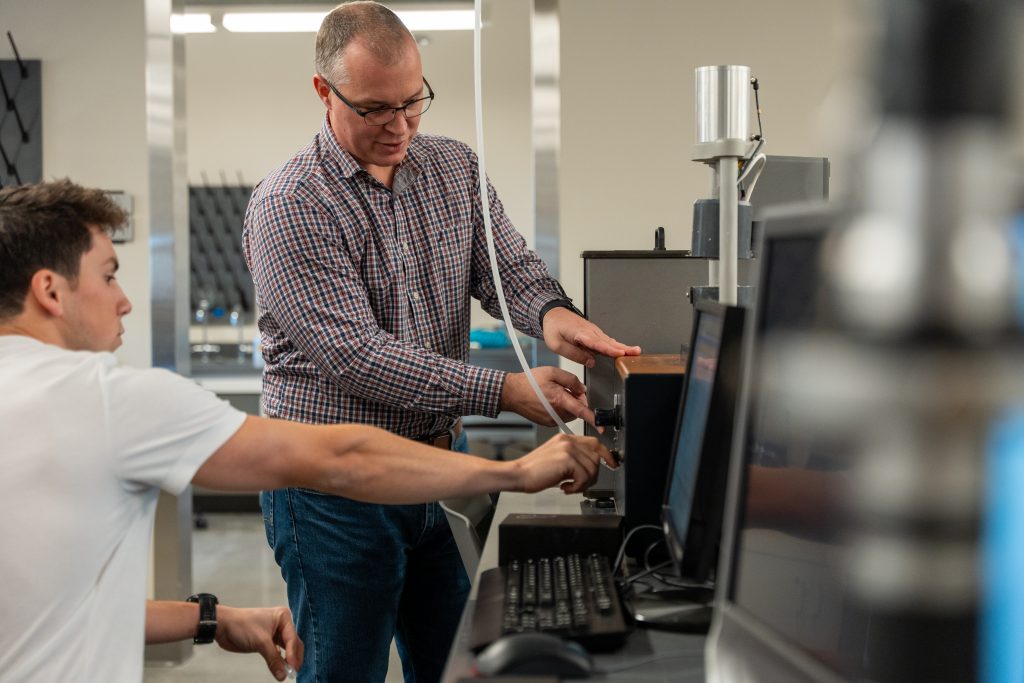
“I hope the students gain a hands-on experience and a perspective on mechanical engineering by completing a project that really motivates them,” he said. “The projects require students to think about material compatibility, impact mechanics and advanced thermal transport. I also think that partnering senior capstone projects with the athletic department is a natural fit and something that students can get excited about.”
Engineer an experience that inspires your future. Choose Mizzou Engineering!
Story written by Mary Dillon. This story originally appeared on Show Me Mizzou